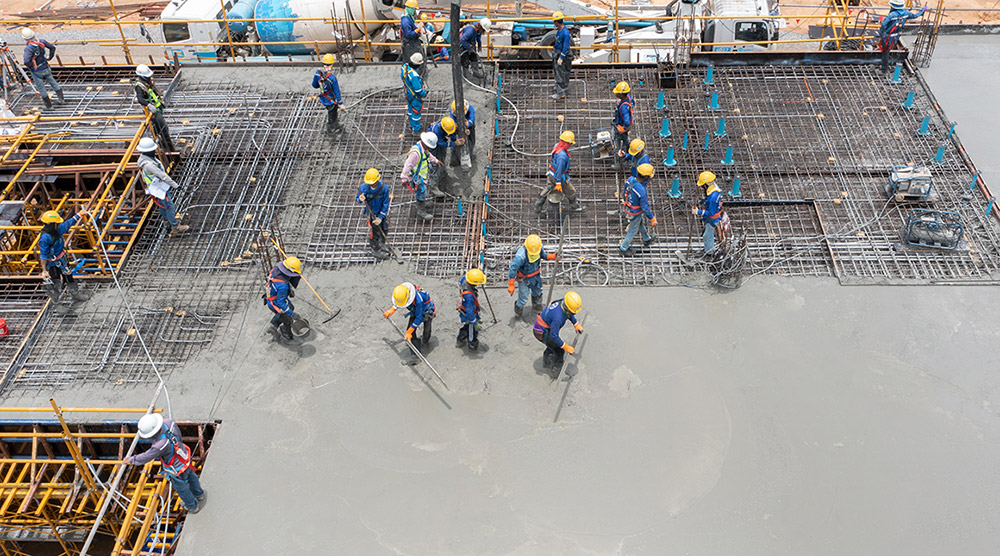Renewed interest in U.S.-based manufacturing is emerging, influenced by economic policy shifts and tariff implementations during the Trump administration. Investments across industries such as automotive, steel, semiconductors and life sciences point to a possible re-evaluation of the United States as a location for production, not just consumption. This trend reflects a mix of strategic considerations — ranging from supply chain resilience and operational risk to market proximity and cost dynamics. Still, beneath the surface of these announcements lies a more nuanced reality: Reshoring manufacturing involves complex decisions that require significant planning, capital and coordination, underscoring the long-term nature of these investments.
President Trump’s economic policies and tariffs may very well expedite the return of manufacturing to the U.S. Despite the turbulence created by the uncertainty and complexity behind shifting policies, recent announcements of major manufacturing investments reflect a strong and growing momentum behind America’s industrial resurgence. For the 13th year in a row, the recently released Kearney 2025 Foreign Direct Investment (FDI) Confidence Index ranks the U.S. as the top destination for FDI. These commitments indicate renewed confidence in the U.S. as a hub for innovation, production and economic opportunity — driven not only by policy incentives, but also by the opportunity of operating within the world’s largest economy and customer base.
Reshoring isn’t a one-size-fits-all solution — viability depends heavily on industry and cost structure.
For many companies, the ability to manufacture closer to demand while tapping into a highly developed market is a compelling factor in long-term strategic planning. Reshoring isn’t a one-size-fits-all solution — its viability depends heavily on the industry, cost structure and supply chain complexity. For some sectors, especially those with low-margin, high-volume products, maintaining global production may remain the most practical and efficient option.
The complexities involved in building new manufacturing facilities require significant time, capital and coordination across multiple stakeholders. The Trump administration’s policies serve as a positive catalyst for reshoring and renewed manufacturing investment, but we must recognize that the initial wave of activity will likely occur on a more modest scale. While the direction is encouraging, large-scale transformation will take time as companies navigate planning, capital investment and broader economic conditions.
Constructing a new, large manufacturing facility is a complex and multifaceted process that, even under optimal conditions, spans 24 to 36 months at minimum. This timeline encompasses site selection, design, permitting and actual construction. Tariffs can further inflate the already elevated costs of essential construction materials, adding financial strain to these capital-intensive projects. It’s important to recognize that reshoring manufacturing doesn’t happen in isolation — it forces companies to rethink and restructure their entire supply chain. Bringing production back to the U.S. also requires careful consideration of sourcing, logistics and distribution strategies to ensure long-term efficiency and resilience.
13
Businesses planning significant investments seek stability and predictability, not volatility, uncertainty, complexity and ambiguity (also known as VUCA). Most manufacturers are playing a long game yet may be hesitant to commit to multi-year investments. The longevity of the current administration’s policy measures is uncertain, given that they can be modified or repealed by subsequent administrations. This uncertainty may deter companies from committing substantial, long-term investments required for reshoring operations. Strategic decisions like reshoring require sustained visibility and confidence in both the economic and political landscape. While tariffs aim to promote domestic manufacturing, the practical challenges of reshoring reveal that a true resurgence will depend on broader economic strategies.
Tariffs alone aren’t enough to lure investment; broader economic strategies are essential.
To accelerate reshoring and maintain FDI growth, the U.S. needs a forward-looking strategy. Tariffs alone are not enough to lure investment. A comprehensive strategy should include pairing targeted tariffs with robust incentives, such as competitive corporate tax rates as well as streamlined regulatory and permitting processes. At the same time, tackling key enablers — like modernizing supply chains, investing in workforce development and adopting advanced manufacturing technologies — will position the U.S. as a global leader in next-generation production.
The current, renewed interest in reshoring and attracting FDI is tempered by caution. Many manufacturers are likely to proceed deliberately, taking a measured approach as they assess long-term policy stability, economic conditions and market demand. Rather than rushing, companies will plan with intentionality and clarity, evaluating how reshoring aligns with their broader operational strategies. It’s a complex decision that involves balancing risk, cost and opportunity — and while some early investments are underway, widespread movement will likely unfold gradually over time.
Reshoring manufacturing to the U.S. is a marathon — not a sprint. It demands long-term commitment, strategic foresight and consistent support from both the public and private sectors. While tariffs and political rhetoric may spark movement, they are not a substitute for a comprehensive industrial strategy. Sustainable growth will depend on the alignment of economic policy with workforce readiness and innovation-driven competitiveness. The path forward is complex, but with deliberate action and unified vision, the U.S. has the opportunity to reclaim its leadership in global manufacturing through a comprehensive approach and focused execution.



